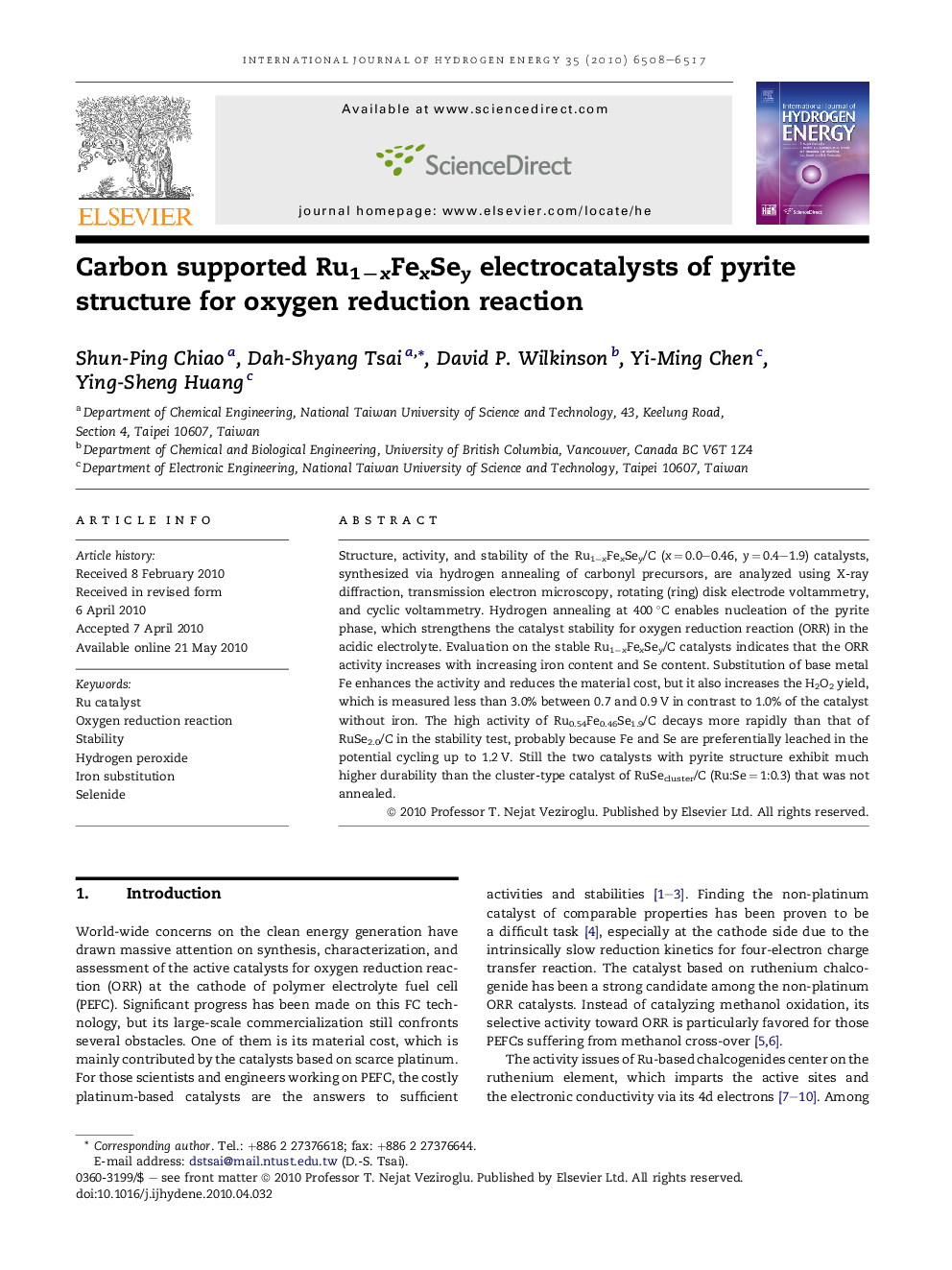| Article ID | Journal | Published Year | Pages | File Type |
|---|---|---|---|---|
| 1272882 | International Journal of Hydrogen Energy | 2010 | 10 Pages |
Structure, activity, and stability of the Ru1−xFexSey/C (x = 0.0–0.46, y = 0.4–1.9) catalysts, synthesized via hydrogen annealing of carbonyl precursors, are analyzed using X-ray diffraction, transmission electron microscopy, rotating (ring) disk electrode voltammetry, and cyclic voltammetry. Hydrogen annealing at 400 °C enables nucleation of the pyrite phase, which strengthens the catalyst stability for oxygen reduction reaction (ORR) in the acidic electrolyte. Evaluation on the stable Ru1−xFexSey/C catalysts indicates that the ORR activity increases with increasing iron content and Se content. Substitution of base metal Fe enhances the activity and reduces the material cost, but it also increases the H2O2 yield, which is measured less than 3.0% between 0.7 and 0.9 V in contrast to 1.0% of the catalyst without iron. The high activity of Ru0.54Fe0.46Se1.9/C decays more rapidly than that of RuSe2.0/C in the stability test, probably because Fe and Se are preferentially leached in the potential cycling up to 1.2 V. Still the two catalysts with pyrite structure exhibit much higher durability than the cluster-type catalyst of RuSecluster/C (Ru:Se = 1:0.3) that was not annealed.
